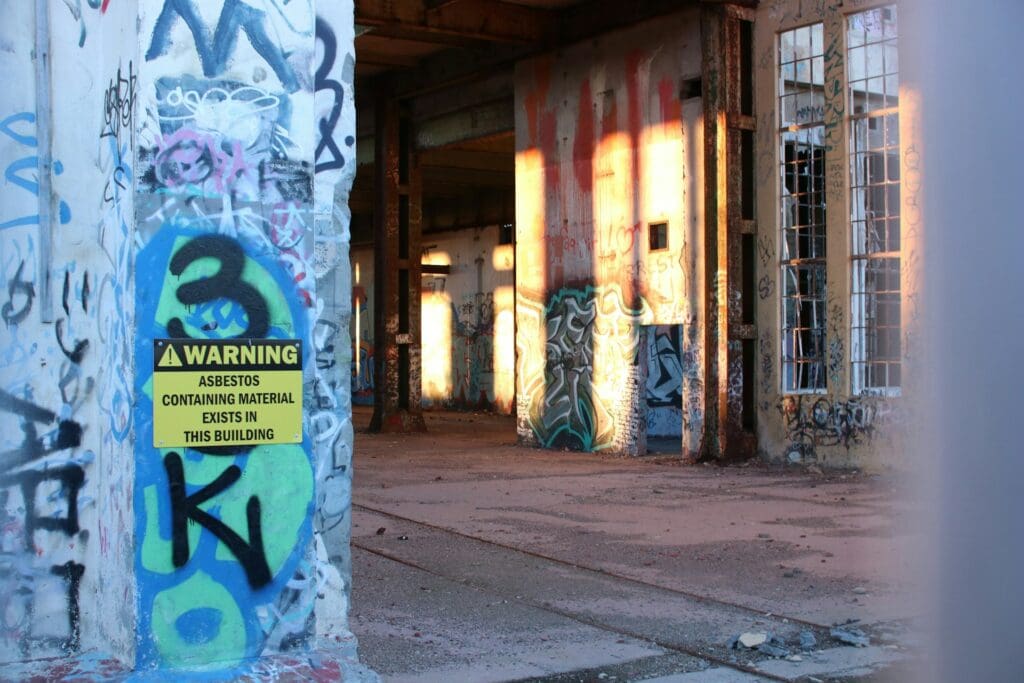Introduction
Asbestos, a naturally occurring mineral, was once widely used in construction due to its exceptional fire-resistant and insulating properties. This fibrous silicate mineral was praised for its strength, durability, and resistance to heat, electricity, and chemical damage. However, in recent decades, it has been found to be incredibly harmful when inhaled, leading to serious lung diseases such as mesothelioma, asbestosis, and lung cancer. Due to these health risks, identifying and properly removing asbestos is essential to ensure the health and safety of individuals living in affected homes.
1. Chrysotile
Chrysotile, also known as white asbestos, is the most commonly used form of asbestos. This serpentine mineral can be found in a surprising number of places in homes and businesses – from roofs, ceilings, walls, and floors to insulation, adhesives, and even some types of paint. Chrysotile fibers are typically long and curly, which can be inhaled when materials made with this type of asbestos are disturbed. The risk of exposure is particularly high during renovations or demolitions, as these activities can release the fibers into the air.
2. Amosite
Amosite, or brown asbestos, was commonly used in cement sheets, plumbing insulation, and roofing materials. This form of asbestos is a member of the amphibole group and is known for its excellent heat resistance. However, it is also considered one of the most dangerous forms of asbestos because its fibers are short, straight and sharp, leading to higher health risks when inhaled. The sharp, needle-like fibers can easily penetrate lung tissue, causing significant damage over time.
3. Crocidolite
Crocidolite, or blue asbestos, is considered the most dangerous form of asbestos. Despite its perilous nature, it was often used in steam engines, pipe insulation, and spray-on coatings due to its excellent heat resistance and tensile strength. Its fibers are extremely thin, fine and easily inhaled, making it extremely hazardous. When disturbed, these fibers can remain suspended in the air for a long time, increasing the chances of inhalation.
4. Tremolite and Actinolite
Tremolite and actinolite are not as well-known as the other forms of asbestos, mainly because they were not commonly used commercially. However, these forms of asbestos can be found as contaminants in chrysotile asbestos, vermiculite insulation, and talc products. Both types of asbestos are known for their needle-like, sharp fibers, which can easily become airborne and inhaled, consequently increasing the risk of asbestos-related diseases when inhaled.
5. Anthophyllite
Anthophyllite is one of the rarer forms of asbestos and can be found as a contaminant in composite flooring, roofing materials, and insulation products. Though not as commonly used as other types, it still poses a risk to health when its fibers are released into the air and subsequently inhaled. Its fibers are typically long, flexible, and can be white, grey, or even a dull green.
The Importance of Professional Removal
Identifying and removing asbestos is not a task to be taken lightly. The health risks associated with accidental inhalation are substantial, and proper precautions must be taken. It is strongly recommended to hire a professional and reputable restoration company to handle the removal of asbestos. Following DIY methods can lead to the release of asbestos fibers into the air, posing a significant health risk to you and others.
These professionals possess the necessary training, knowledge, and equipment to handle asbestos safely. They can identify the presence of asbestos, determine the extent of the risk, and safely remove or contain the asbestos without causing unnecessary exposure.
Conclusion
Ensure your safety and the safety of those around you by seeking professional help. Asbestos is a silent killer that lurks within many homes, especially those built before the 1980s. With the right precautions and the help of professionals, we can protect ourselves and our loved ones from the health risks posed by asbestos.




